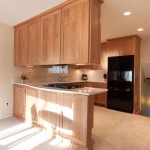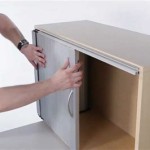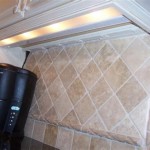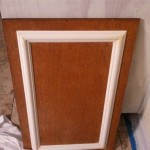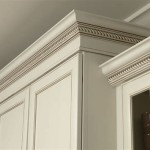What Size Pulls for Upper Cabinets in Kitchen
The choice of cabinet pulls is a significant aspect of kitchen design. They not only contribute to the functionality of the cabinets but also shape the overall aesthetic. When selecting pulls for upper cabinets, size plays a pivotal role in achieving a visually appealing and user-friendly outcome. Factors such as cabinet size, door style, and personal preferences should be considered when determining the ideal pull size for upper cabinets.
Cabinet Size: Small, Medium, and Large
The size of the cabinet door directly influences the size of the pull that's appropriate. For smaller upper cabinets, typically found in areas like pantries or above appliances, smaller pulls are often preferred. These can be as short as 3 inches in length and have a narrow width, ensuring they don't overwhelm the diminutive cabinet door. Medium-sized upper cabinets, commonly used for storage above the countertop, accommodate a broader range of pull sizes. Lengths between 4 and 6 inches are typical, allowing for a visually balanced look without appearing too bulky. Larger upper cabinets, often employed for showcasing decorative items or housing bulky appliances, can handle larger pulls with lengths extending beyond 6 inches. When selecting pulls for larger cabinets, it's crucial to ensure the pull isn't so large that it hinders functionality or becomes a visual distraction.
Cabinet Door Style: Traditional, Contemporary, and Transitional
The style of your cabinet doors also factors into the appropriate pull size. Traditional cabinets, often characterized by intricate details and ornate designs, are best complemented by pulls that are proportionate to the overall design. Larger, more ornate pulls with intricate details often enhance the traditional aesthetic. Contemporary cabinets, known for their clean lines and minimalist features, generally call for simple and streamlined pulls. Small, rectangular pulls with minimal ornamentation are a common choice for contemporary kitchens, emphasizing the clean lines of the design. Transitional cabinets, balancing elements of both traditional and contemporary styles, offer more flexibility in pull selection. Slightly larger pulls with subtle decorative elements can work well, providing a bridge between the two design aesthetics.
Personal Preference: Functionality and Style
In addition to cabinet size and style, personal preference plays a significant role in the choice of pull size. Consider the functionality of the pulls. Will they be used frequently or primarily for aesthetics? For frequently used cabinets, such as those for everyday dishes or cooking supplies, choosing pulls that offer a comfortable grip is essential. Larger pulls with a wider surface area provide more leverage, making them easier to open and close. Aesthetically, consider the overall design of the kitchen. Do you prefer pulls that blend seamlessly with the cabinet doors or stand out as a design element? Smaller pulls tend to create a more understated look, while larger pulls can become statement pieces. The choice depends on your personal preferences and the overall design aesthetic you're trying to achieve.

Comprehensive Guide To Cabinet Hardware Size Placement Handles More Ltd

Comprehensive Guide To Cabinet Hardware Size Placement Handles More Ltd

How To Choose The Right Length Pull For Cabinets Porch Daydreamer

How To Choose The Right Length Pull For Cabinets

How To Choose The Best Size Bar Pulls For Kitchen Cabinets Torera George

How To Mix Kitchen Cabinet Hardware Knobs And Pulls Porch Daydreamer

How To Choose The Right Length Pull For Cabinets Porch Daydreamer

How To Choose The Best Size Bar Pulls For Kitchen Cabinets Torera George

How To Choose The Best Size Pulls For Your Kitchen Cabinets Doors Doorcorner Com

Cabinet Hardware Placement Guide
Related Posts



